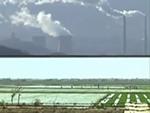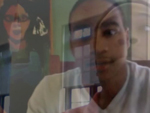 Course: AMES 7 – Environment and Development in China
Course: AMES 7 – Environment and Development in China
Instructor: Ken Bauer
Assignment: Multimodal Research Project
Description
The Multimedia Research Project is a multimodal essay, with a hypothesis and an overall argument supported by evidence. It integrates our in-class discussions and builds on close
reading of articles and lectures as well as the search for and analysis of multimedia sources on China’s environment and development. You will research a topic and create a multimedia project
(see Possible Research Topics below for ideas). The research project will provide you with an
opportunity to critically engage and analyze an environment and/or development issue in
contemporary China.
Objectives
The goal of this project is to increase the clarity of your writing skills in expression, coherence,
and elegance while building rhetorical flexibility in the use of images, words, film, audio, etc. The
hope is that students will gain literacy in multimedia as they sharpen their understanding of how
arguments are constructed. As a result of this project, you will:
• learn to do research with primary sources, including popular sources and peer-reviewed
scholarship;
• practice collaborative creativity as you comment upon, constructively support, and build
each others’ projects through group exercises and in-class workshops;
• use multimedia resources to support an argument, create effective transitions between
ideas, and develop your voice.
• add a set of multimedia skills to your toolkit for engaging the world beyond Dartmouth.
• consider critically the sources, assumptions, ethics of their arguments.
Resources
In order to learn how to make a film, you will participate during class time in several workshops. A
technology specialist will train you in using images and audio in iMovie at the Jones Media
Center. Ariel Murphy ’12 has been assigned to be a RWIT student
mentor for this course; she will be a great resource in terms of helping you with this multimodal
research project. You should also consult Jones Media Center tech specialists whenever
necessary.
To schedule equipment use, visit this website:
http://www.dartmouth.edu/library/mediactr/equipment/
To schedule an appointment time with RWIT tutors, visit this website:
https://students.dartmouth.edu/rwit/appointments/undergraduate-sessions
Jones Media Center Video Project tutorials:
https://sites.dartmouth.edu/mediaprojects/resources/
Jones Media Center Quick Reference tutorials:
http://www.dartmouth.edu/library/mediactr/tutorials.html
Dartmouth has many additional resources to help you as you are building this research project –
please take advantage of these resources as well as office hours for consultations with the
instructor.
Audience
This project is pitched for an audience potentially larger and less specialized than the instructor
(though he will still end up grading it). Hopefully your research project will find a broader audience
and, potentially, engage with communities of scholars and netizens across the globe. Keeping in
mind that this film will be publicly available, students are required to work consciously in achieving
clarity, straightforwardness, and concision in their arguments. Further, students will be expected
to create and communicate with respect using appropriate materials. Guidance on respectful use
of the Internet and media tools can be found at Dartmouth Information Technology Policy:
http://www.dartmouth.edu/comp/about/policies/general/itpolicy.html.
Requirements
The research project (40% COURSE GRADE) is sequenced and will be completed in stages,
described below.
1. INSTRUCTOR CONSULTATION on April 18 to discuss your proposed research
project.
2. You will participate in one iMovie TRAINING SESSION at Jones Media Center (April
25), in which you’ll learn video-making techniques. You can also learn about iMovie
at www.apple.com/imovie. There are also numerous Internet tutorials available
through www.YouTube.com, etc.
3. You will submit a TREATMENT PLAN (500 words) for your research project, due
April 28. The instructor will provide a form for the treatment plan (5% of the research
project grade).
4. You will present a PITCH to your peers on May 2. Imagine you are the director and
have just 5 minutes to present your proposal to a potential producer. Your pitch will
outline your purpose, visual & audio content, and overall structure and argument.
Use a working title for your film.
5. You will participate in iMOVIE WORK SESSIONS during class on the following
dates: 5/2, 5/12, 5/19.
6. Since film is a public medium, we have a PUBLIC SCREENING of your films in class
at the end of the term (5/23 + 5/26). At the screenings, the filmmakers will not only to
present their own films but also assess their peers’ work.
7. You will submit on a FINAL COMMENTARY (500 words) on your filmmaking
experience (5% of final project grade). In this commentary, you will address the
following:
a. Problems you encountered
b. Solutions you found
c. Resources you used
d. Thoughts about your process and product.
The instructor will provide a form for the final reflection (due June 2).
Technical Guidelines for Multimedia Research Project
Students will use iMovie or similarly accessible software as an editing program for this
assignment. Editing stations and portable hard drives are available for use through coordination
with the Jones Media Center. The instructor will arrange to make DV tapes available from Jones
for the taping and storage of projects. Students will present their multimedia research project to
their peers at the end of the term.
Running Time: (including credits) 6 minutes maximum, 4 minutes minimum (NO EXCEPTIONS)
Images: Use any appropriate images from digital archives. You must credit all image sources at
the end of your film. You are encouraged to use your own photos if relevant.
Audio: Any kind – voiceover, song, music, sound effects. Remember the overall time limit when
you choose audio. You are encouraged to compose your own music. You must credit all audio
sources at the end of your film.
Video: 4 minutes maximum. Use video advisedly. Using more video does not correlate with a
better film or better grade. Remember that editing footage takes much longer than acquiring it.
Keep it simple and appropriate.
Credit and Permissions: In your film’s credits cite all sources – quotes, images, videos, or audio
recording – that you have used. See the following website for guidelines on crediting media
sources: How to Cite Media
For educational uses – such as showing your film to the class – you do not need to get written
permission for the use of others’ original material. But if you plan post your film on a web site or
screen it at a public (non-educational) event, YOU HAVE TO GET WRITTEN PERMISSION
BEFOREHAND TO USE OTHERS’ MATERIALS. However, you are permitted to post your film to
YouTube or other sites as long as: (1) you make it clear that the film is to be used FOR
EDUCATIONAL PURPOSES ONLY; and (2) YOU PROVIDE CITATIONS FOR ALL SOURCE
MATERIAL.
Final Submission: Save your film as a Full Quality Quick-Time file. Upload the project in the
“Multimodal Research Project” folder on the server space allotted to our class, which Jones
Media Center will provide.
Example of Final Project
[youtube lwkbKQfqkEU]
[youtube aVXAzI-_6Xo]
 Course: ENVS 7 – Ecopsychology
Course: ENVS 7 – Ecopsychology



